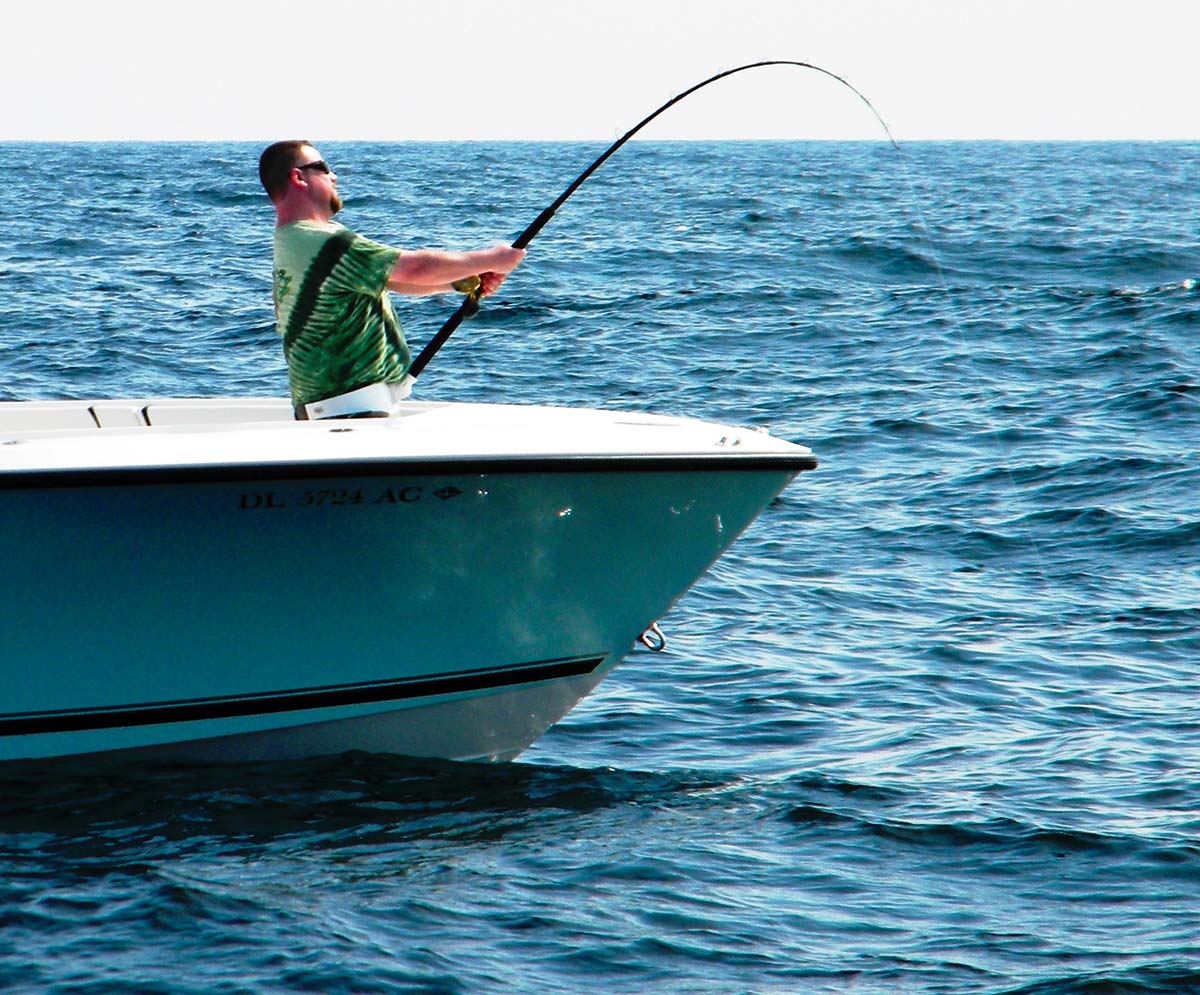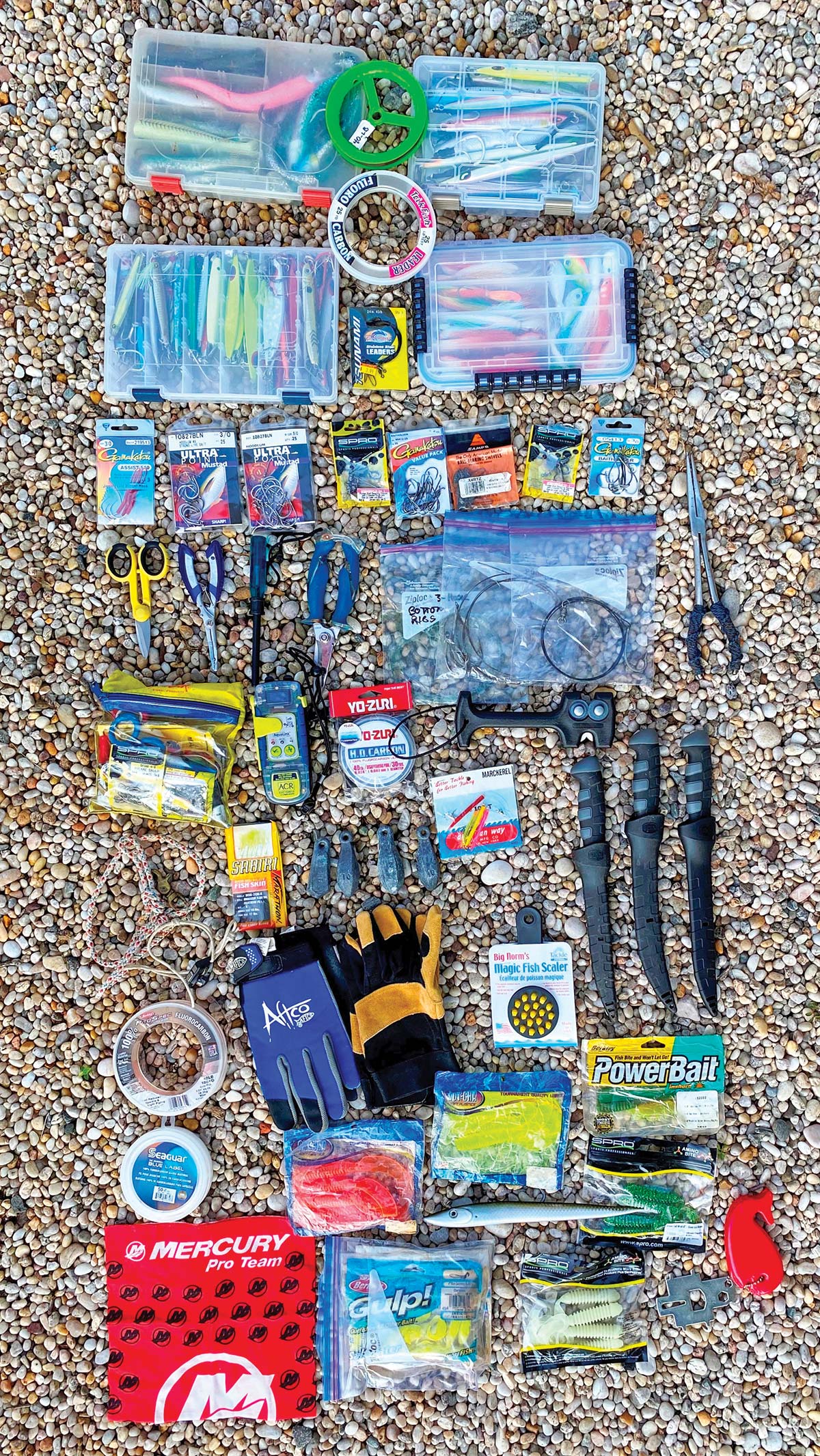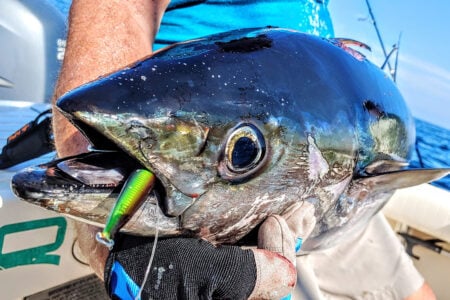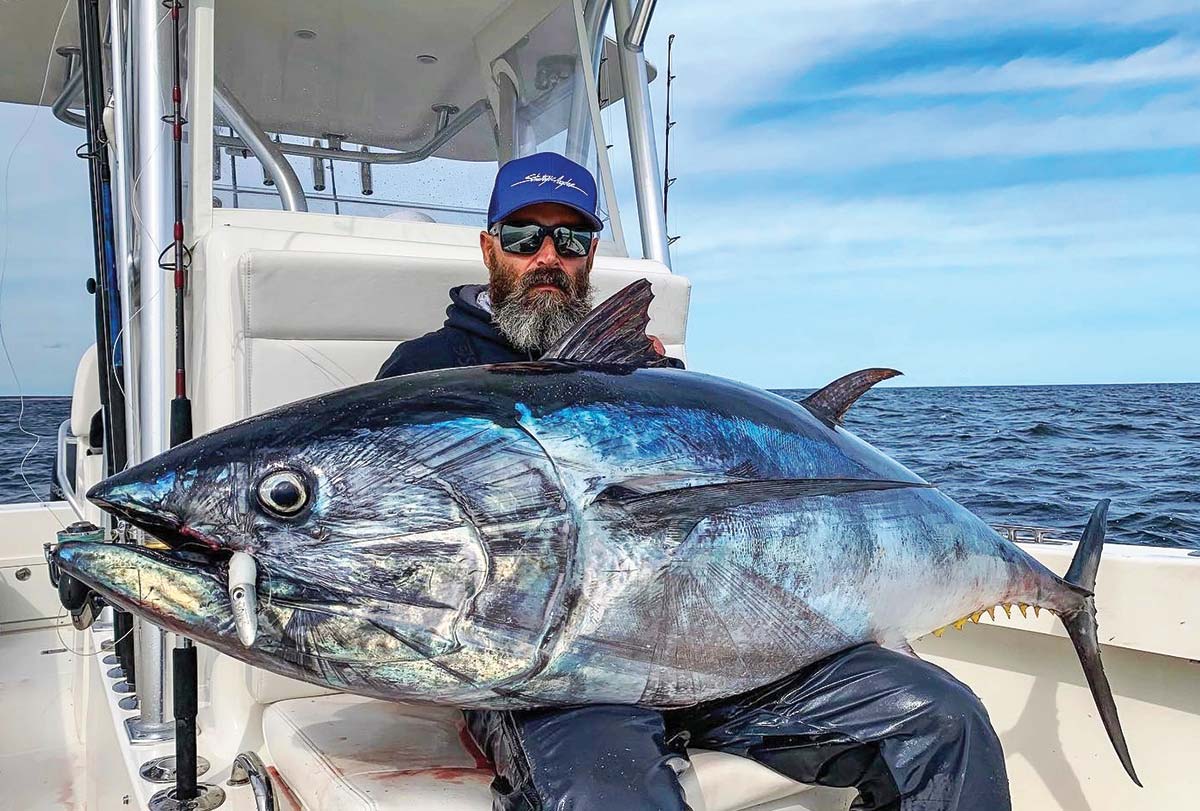
The term jiggy-pop has leaked into the lexicon of near offshore saltwater anglers. It’s a truncation for a relatively updated, evolved style of jigging and popping for surface, mid-depth and bottom-feeding gamefish, with bluefin, yellowfin, longfin albacore, false albacore, skipjack and Atlantic bonito being on top of the intended species list.
There are other summer season pelagics that will also respond to a well-presented jig, popper or stick bait, with white marlin, dorado, wahoo and cobia coming to mind. With September being one of the best months to practice this specialized approach, let’s take a deep dive into the gear and accessories you will need to be a real “playa” in the jiggy-pop game.
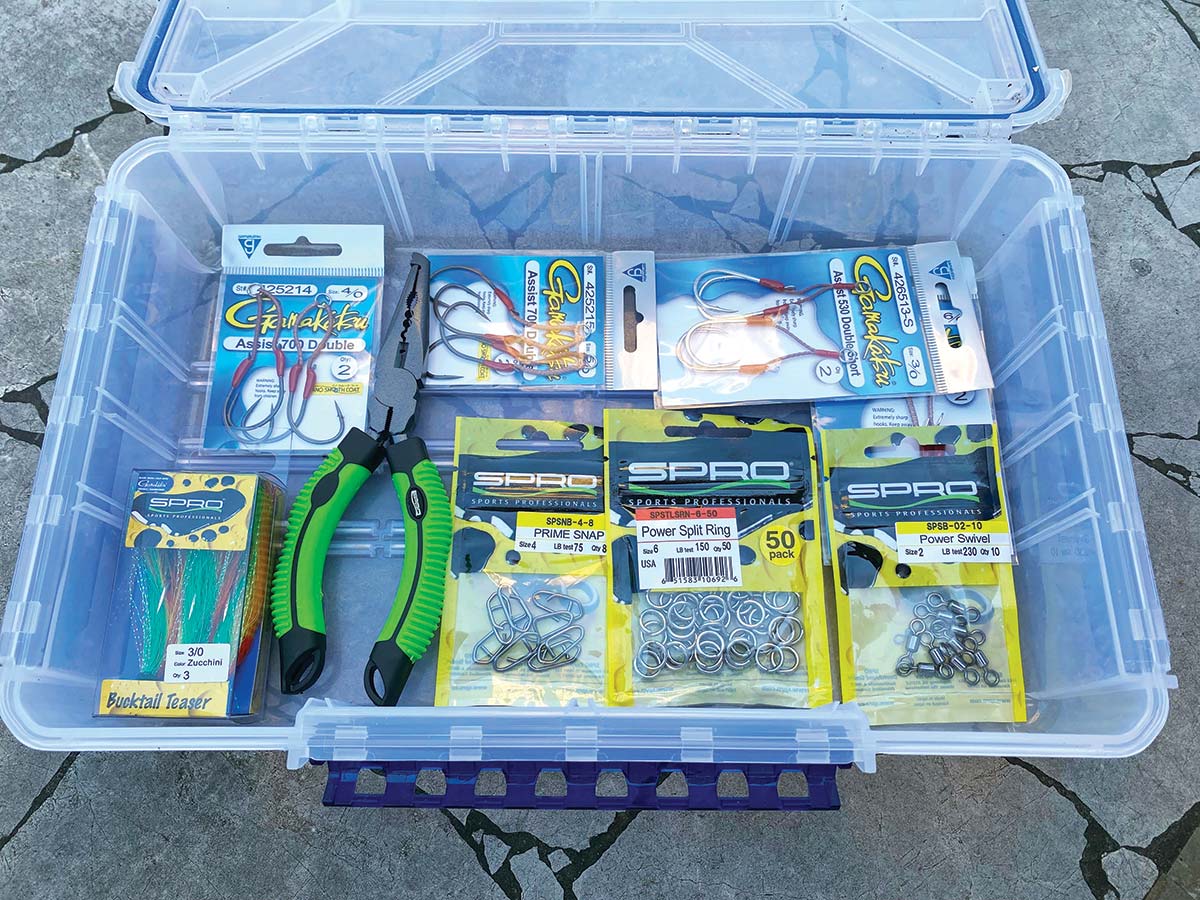
Although some may think about trying out some of these techniques on their next head boat tuna trip, this might not go over well with the captain, mates and other paying customers. The entire jiggy-pop experience calls for incessant overhand, sidearm, underhand and lob casting, followed by energetic side-to-side sweeps of the rod, some tip twitching and plenty of frenetic pumping and reeling to get large, foraging tuna to veer off from gulping down mouthfuls of tasty sand eels or bunker and take an interest in your lure or jig.
Suffice to say, this style of fishing is best accomplished on a boat with ample forward and aft cockpit space for multiple anglers to cast and retrieve, with a minimum of obstructions like outriggers, T-Tops/hardtop frames, radio antennas, radar arches and such.
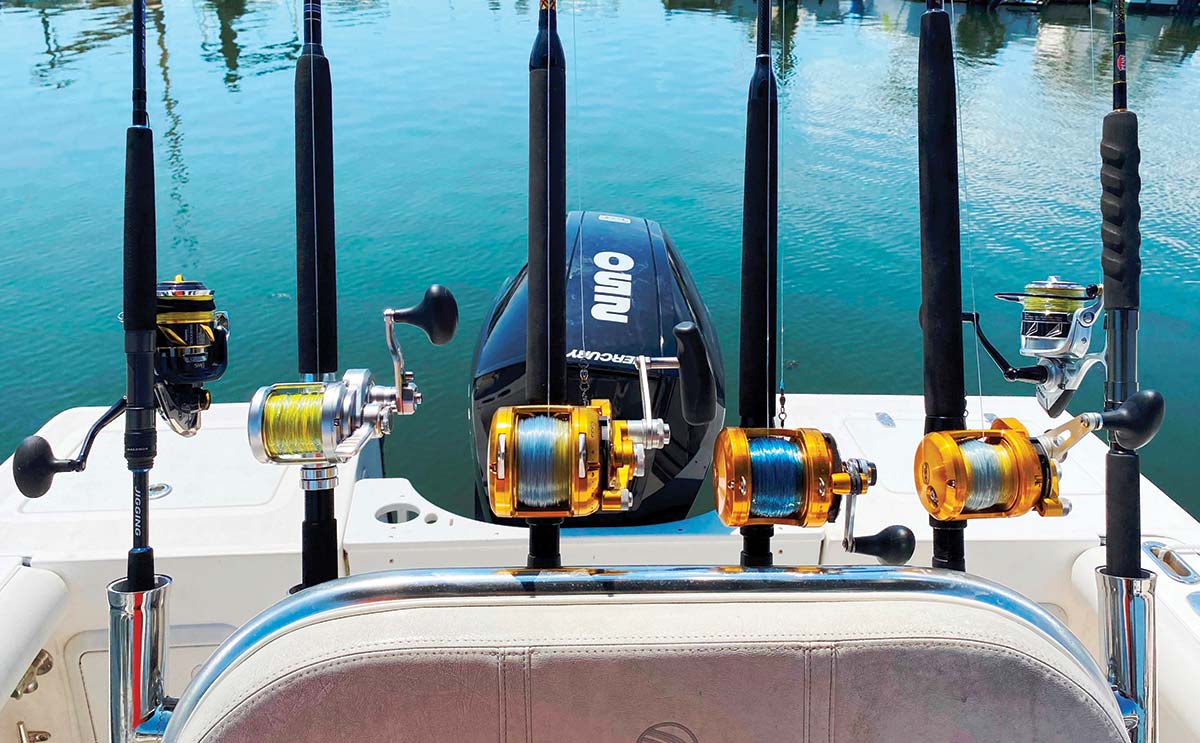
Spinning Or Conventional?
The age-old question that must be addressed before getting started in the jiggy-pop game is which type of reel do you prefer, spinning or conventional? My answer is simple; I’ll just take one (or three) of each aboard on my trip. Spinning and conventional gear have their plusses and minuses, with spinning outfits certainly being the easier of the two to consistently cast to schools of fish that might be 50 to 75 yards downrange from the cockpit. Although some folks might be able to sling a popper or stick bait like a Shimano Orca or Hogy Charter-Grade Slider with a conventional outfit, it’s hard to beat spinning gear when performing this task. Spinners are also great for quickly swapping out spools to either replace lost line or to bulk up to heavier line if needed.
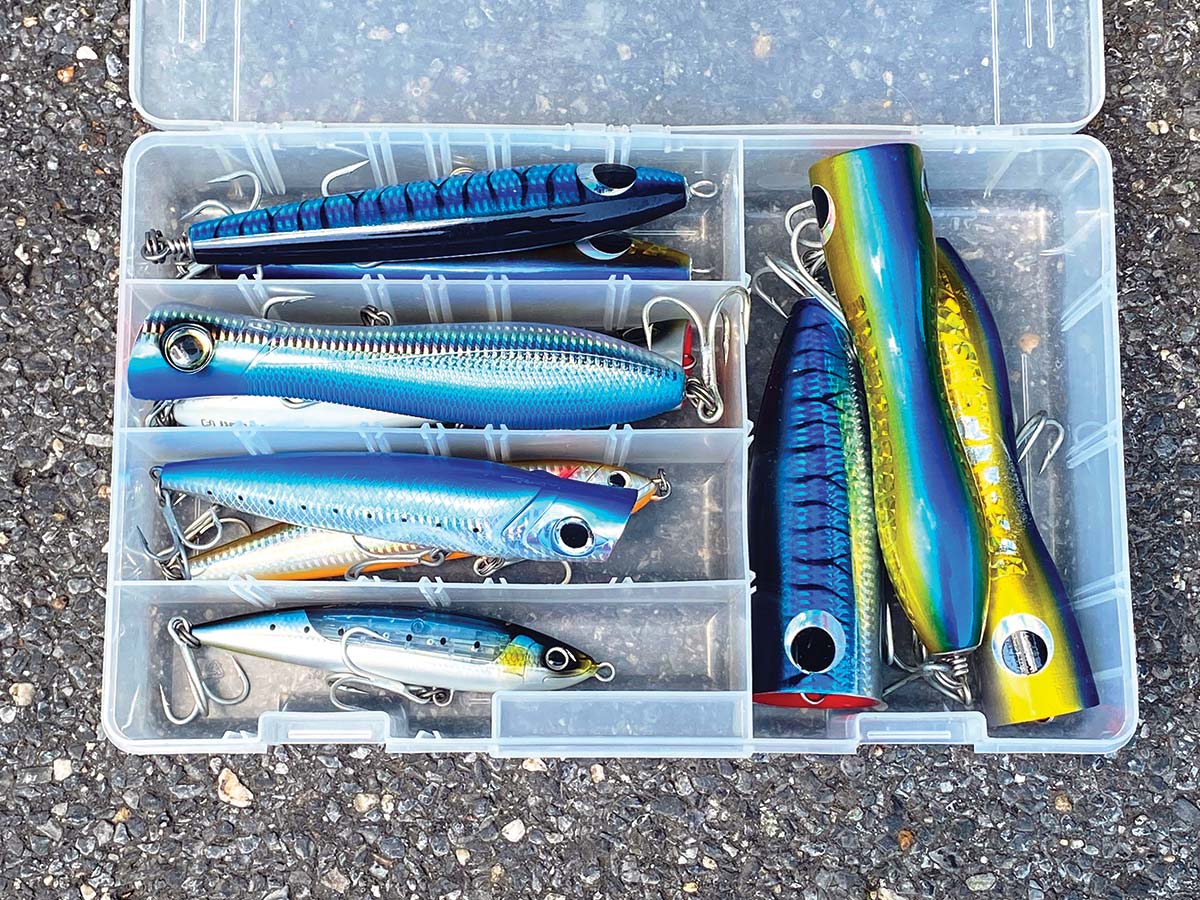
The major negative with spinning reels is their tendency to develop dreaded line twist. But another downside is the single gear aspect, which is not always ideal when a big one heads down deep and refuses to budge. Unlike conventional reels – many of which feature harness lugs to attach a shoulder or kidney belt to help take pressure off the angler – the design of a spinning reel precludes this accessory item and requires the angler to install “spinning straps” (made by AFTCO, Braid and others) that hook over the rod to get some back relief during the fight.
While conventional reel outfits might not have the constant castability for many rookie and average skill anglers, in my opinion it is superior to spinning gear when working big tuna to boatside once hooked up. The ability to drop down to low gear when the fight gets vertical is one of the biggest game-changers that allows anglers to consistently catch large fish on lighter weight gear. I have spent the better part of five decades proving this “theory” to many hundreds of anglers out on the briny and with the quality of today’s lighter tackle equipment (like the Avet Raptor, Shimano Talica and Speedmaster, Penn VSX/VISX, etc.), the two-speed reels are lighter, stronger, more reliable, with improved castability than ever before.
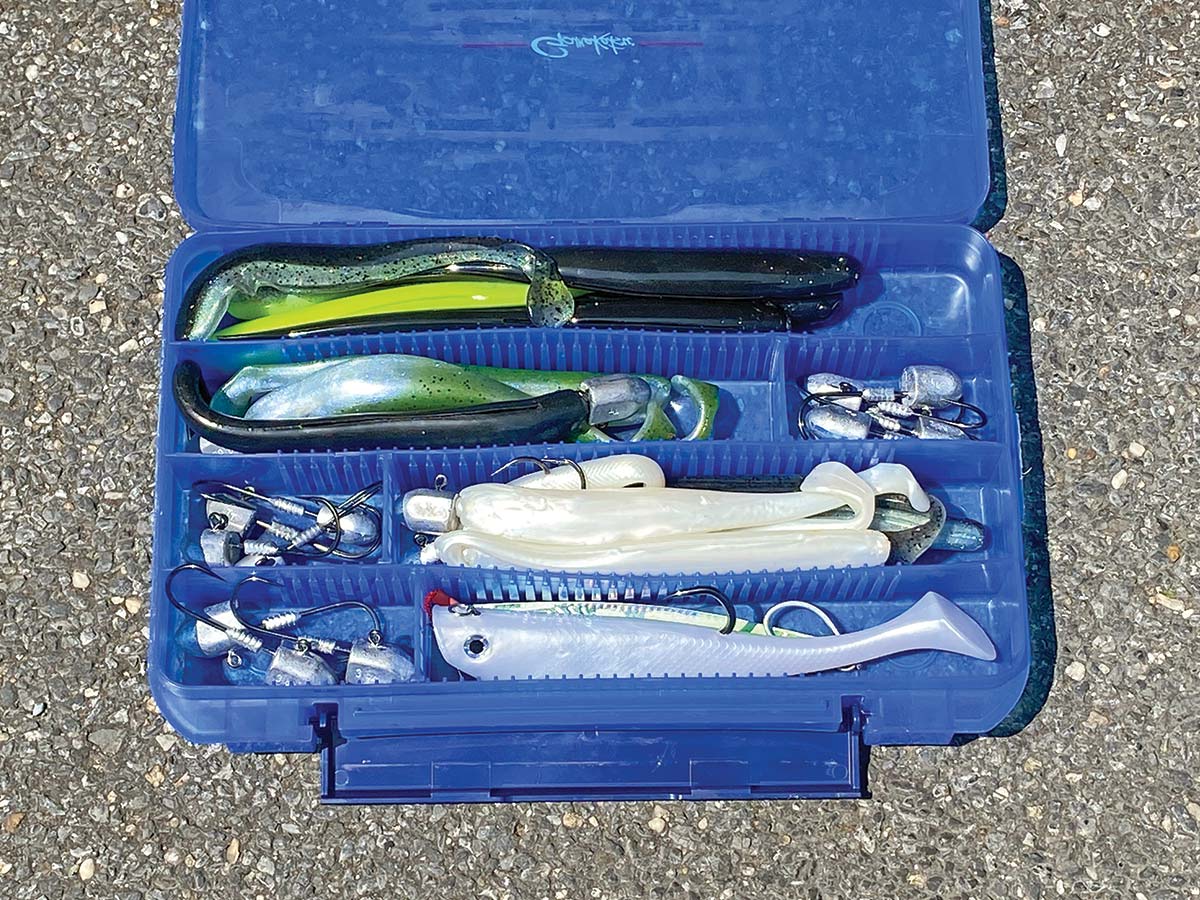
Bottom line, I own and use Shimano Stellas, Talicas, Speedmasters, Avets, Penn Slammer IV and Battle III DX spinners and Penn VSX/VISX two-speed reels, and I like them all for use in the proper moment, depending on who is on the rod at the time. While one-speed conventional reels have a place in the tuna jigging game, their gear ratios are usually set in the 4 to 5:1 range as the best compromise to allow the angler to get some turns on the handle when under an extreme drag load, while still being able to make a jig dance through the water column. In contrast, a two-speed reel of the same size and relative weight will offer both higher and lower gear ratios, which makes a jig come to life on high speed, and it offers a bit more leverage to pump a tuna up from the depths in low gear. Upgrading a single speed revolving spool reel with a long/larger power handle can make up for this potential deficiency. Be advised that many a large thunnus has been sent thumping on the cockpit sole, courtesy of being defeated by a skilled angler employing a one-speed conventional reel. Like you’ve heard many times before, it’s not the wand that’s important, it’s the knowledge of the magician.
When considering the ideal rod for your reel of choice, there are numerous considerations. If you cast more than you jig, a longer rod in the 7- to 8-foot range is probably preferred for extra length on the cast. However, this same rod could be problematic when working a jig up and down in the water column, where the length of the cast is not as important as the leverage of a shorter rod. My spinning rods are usually longer (around 7 feet in length) to aid in casting poppers, sliders and stick baits, but still short enough to work a jig in the vertical plane if required. My dedicated jigging rods are typically shorter in stature (5-1/2 to 6-1/2 feet) since they are meant for the vertical game and for trolling on demand.
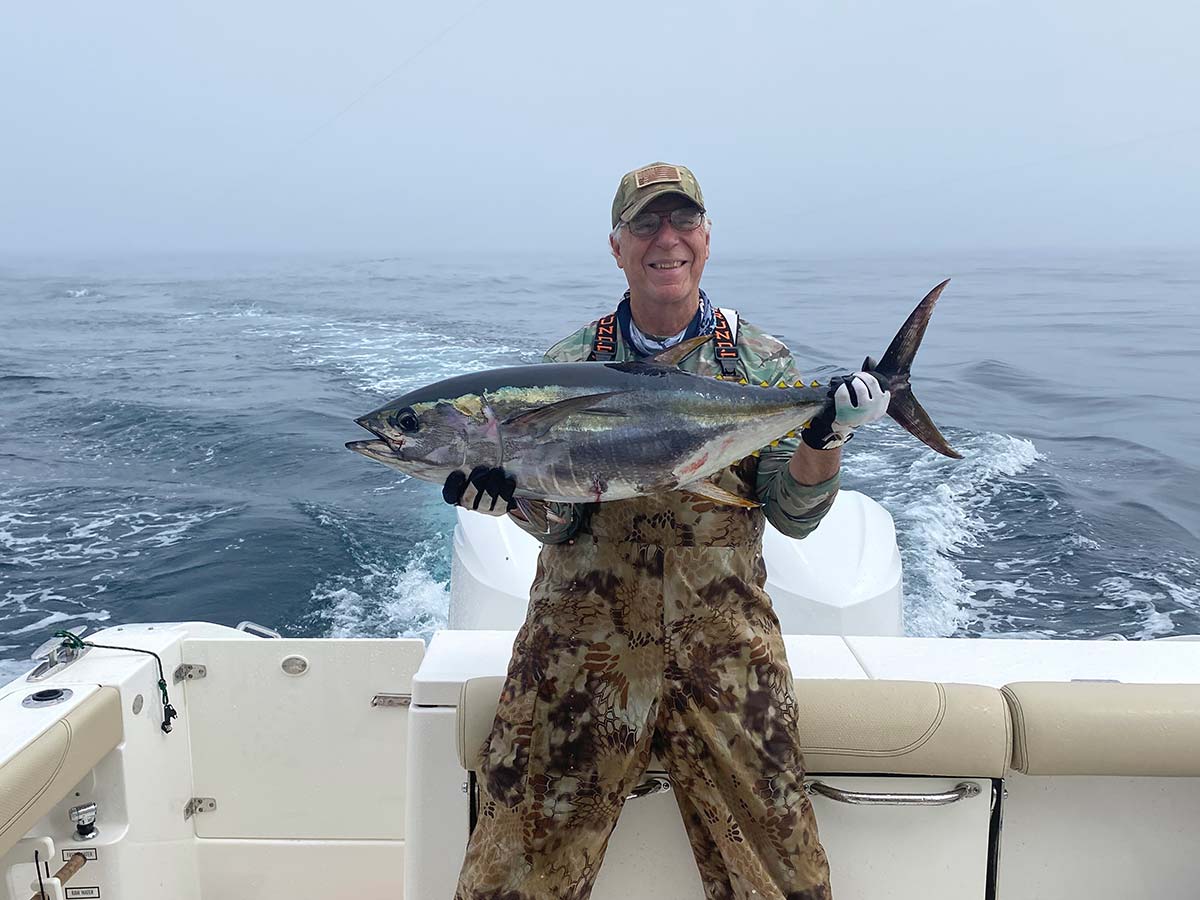
Preferred Hardware & Software
The world of blue water hard baits and soft plastics is an ever-changing environment. Major manufacturers like Yo-Zuri, Shimano, Tsunami, Hogy, SPRO, Mann, Braid, Nomad and others are always adding new products to the mix. I try to stick with the items that have historically worked best, but I’m always trying out new gear to see if it makes the grade. There’s only so much room for tackle storage on a boat and those that are proven performers tend to take the ride out to 30 fathoms and get the call when it’s time for action stations.
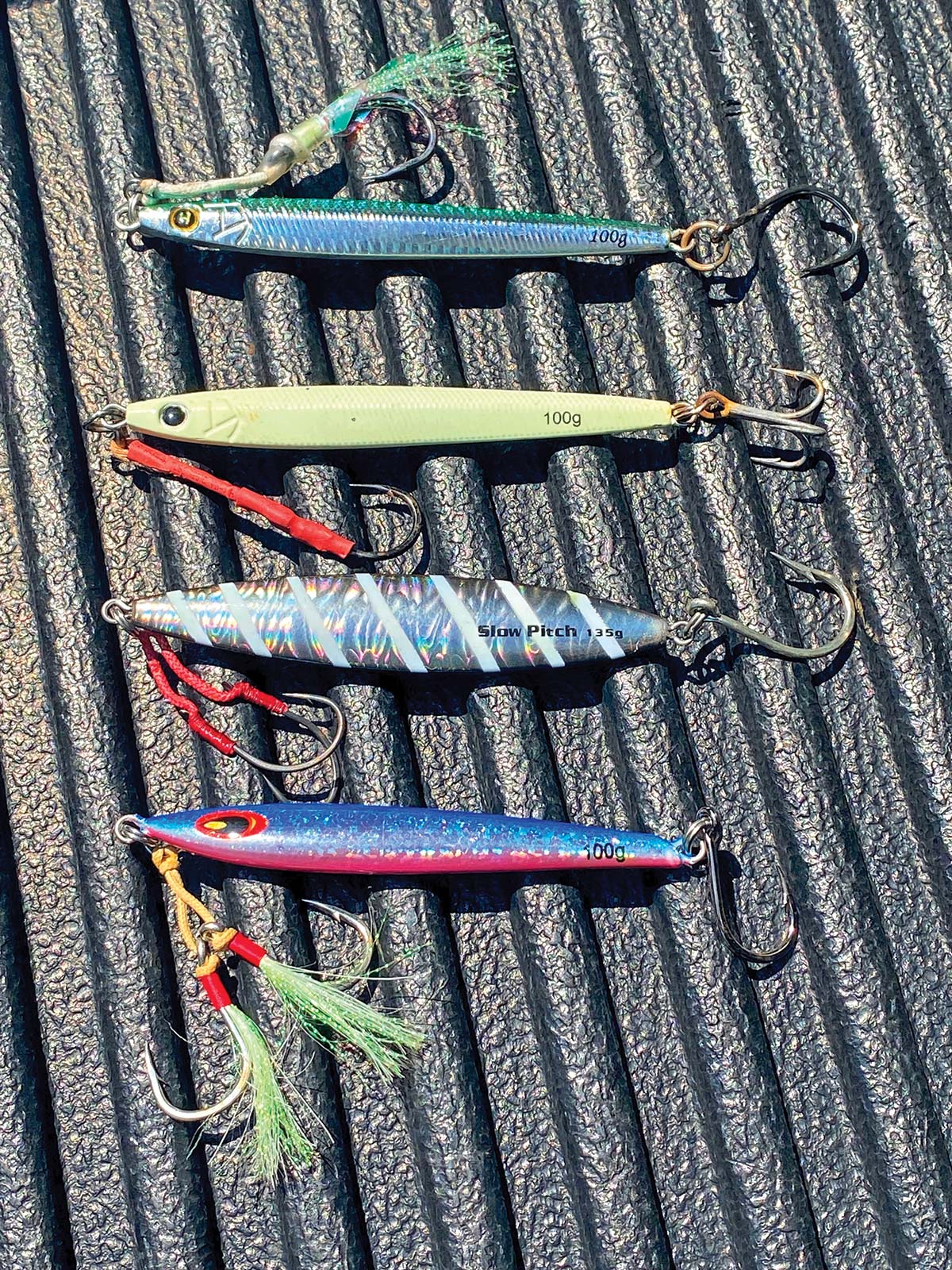
When trying to assemble a selection of hard and soft baits to take on your trips, it’s always best to try to “match the hatch” when tossing an artificial lure into a feeding frenzy. You would be shocked at how many times the “wrong” lure is ignored when the tuna are zoned-in on one type of bait or another. The answer is to bring a variety of lures and jigs onboard and be ready to swap them out quickly if you are not getting strikes.
Whether I’m fishing on my boat or doing an away charter, I’ll normally drag along a small square milk crate full of various items and lures that will include a clear Plano tackle tray of soft baits, jigheads, different colored/length tails and pre-rigged sand eel jigs; another tackle tray is loaded with metal jigs of every size from 80 to 300 grams, in every color of the rainbow, rigged with a variety of main and assist hook combos; yet another tackle tray includes oversized, thru-wired casting and popping lures like the Yo-Zuri popper, Shimano Orca, Hogy Slider and Tsunami stick bait among others; a fourth tackle tray includes a variety of lure rigging items, like split ring pliers, replacement single and assist hook setups, both solid rings and split rings of different strengths, teaser lures that are tied in ahead of the jig, plus swivels and snaps; plus a medium gimbal belt to complete the package.
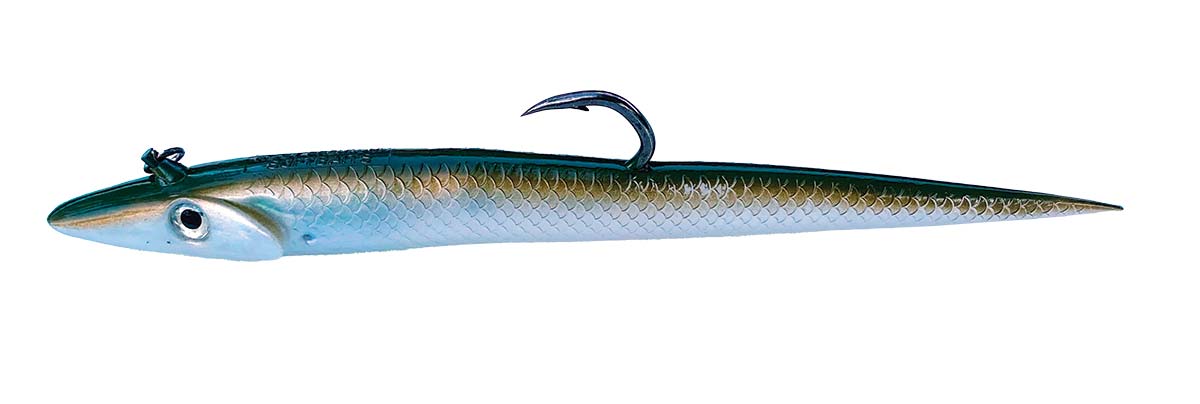
The size, colors and types of jigs available to us today seems at times to rival the amount of stars that are in the Milky Way. I must own a thousand jigs, but can only take 40 or 50 with me on my boat or in my go-bag at any time; matching the hatch is a multi-dimensional challenge where you must think about the length, the color, the shape and the action of the jig, all while you present it at just the right speed. If any one of these ingredients is a slight bit off, it’s no fish for you!
When planning a jiggy-pop tuna trip, I’ll take a mix of butterfly, sand eel, flutter, flat-fall, fast-sink and slow pitch jigs in my box, in a variety of colors that include green glow, pink, olive green, silver flash and mackerel hues, hoping that there are a few that will cause some excitement and bend the rods. Keep changing things up until you catch a fish. After the first one is on the boat, things will become more in focus, since that tuna will usually be spitting up whatever it’s been eating and this gives you a better idea of how to replicate the bait du jour with your metal jigs and/or soft baits.
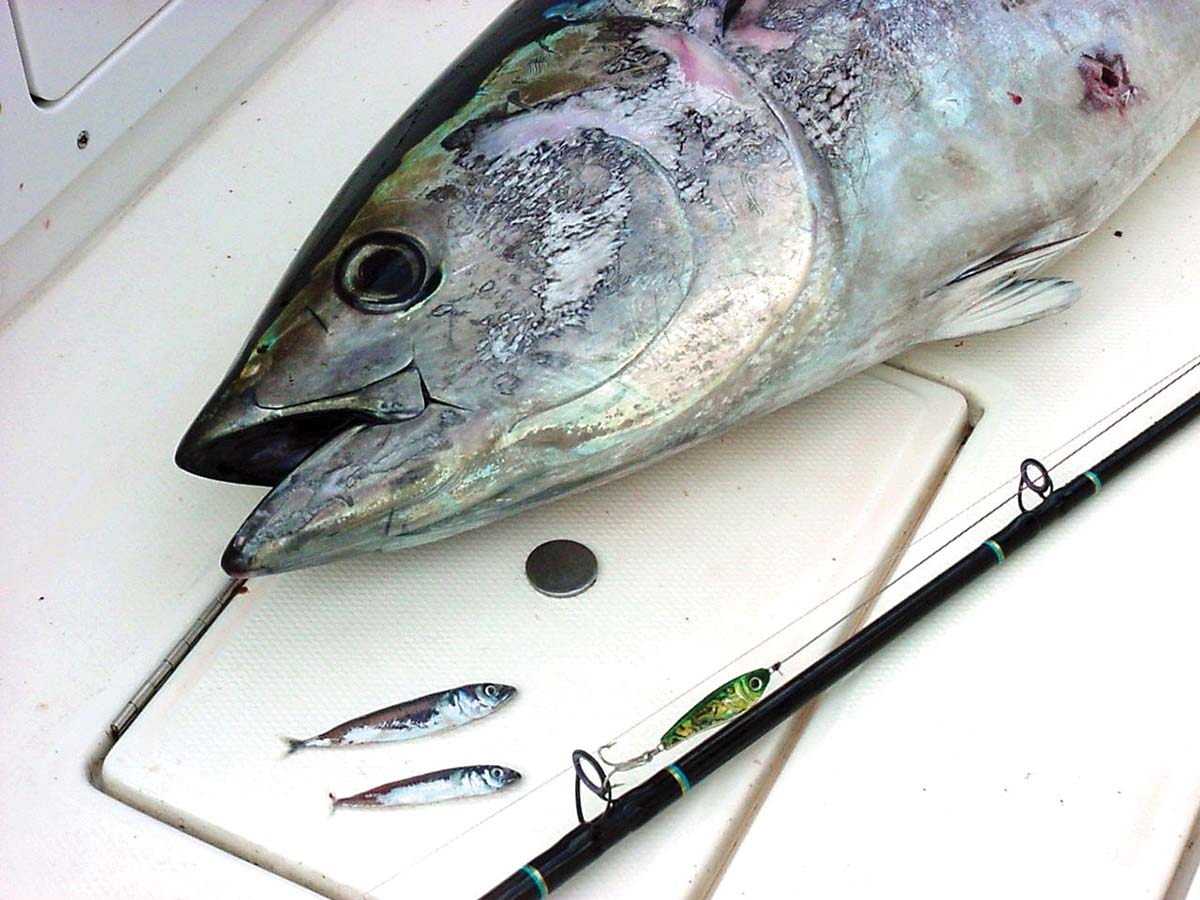
An Asymmetrical Approach
| GO-BAGS |
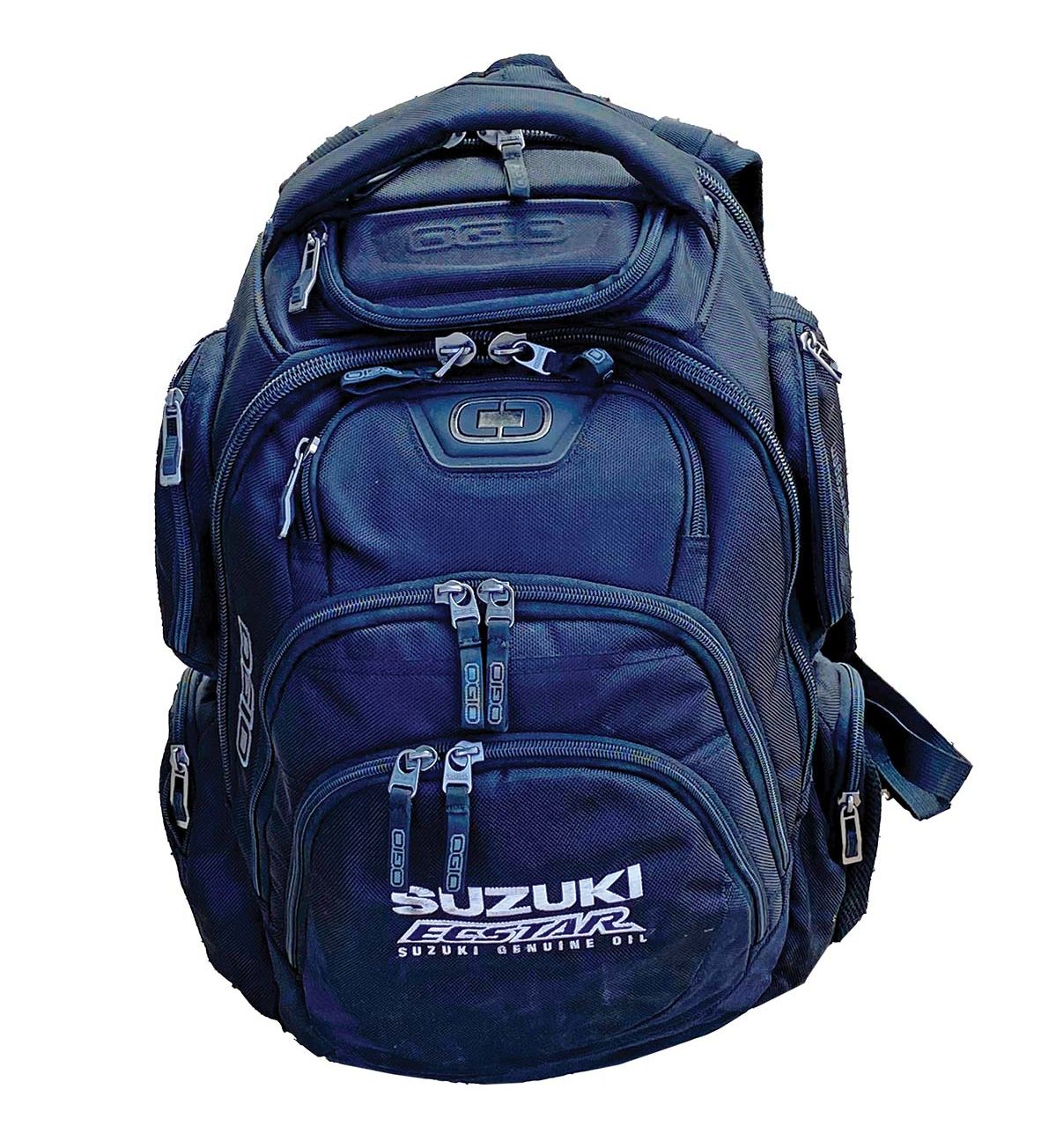
Whenever tuna are on the menu, my trusty go-bag is coming along for the ride. The contents of this 40-pound backpack have been honed over five decades of offshore fishing, and my 2023 Go-Bag includes the following:
I am constantly adding and subtracting from the G-Bag’s current inventory, but this is a great place to start. When combined with my Go-Box milk crate, I have everything that I need for a potentially successful day in the jiggy-pop world. |
When targeting tuna for jigging and popping activities, you’ve got to locate the usual habitat. A sea temp chart that can indicate moving water, currents or temperature breaks is a good place to start. Once you have a general idea where you think you’d like to start and the weather is obliging, it’s always a good idea to reach out to anyone who has been out there tuna fishing in the past 24 hours just to get the latest intel. Once you are in the area you’ve selected, look for the usual signs like birds, whales, porpoises, downwind scents, bait schools or marks on your fishfinder
One of the “irregular” methods I employ when targeting tuna and other cooperative pelagics for jiggy/pop activities is to bring along a modified version of my trolling spread, and the rationale is pretty simple; you’ve got to find them before you can finesse them with surface lures, thermocline layer and bottom bouncing jigs. There are those times when your trip is bereft of any of the usual tuna signs mentioned earlier, so the trolling process will be a major plus in your efforts to locate your quarry on a timely basis while listening intently to the usual VHF channels for any signs of action from nearby boats. It is in these moments that I will switch on my AIS (automatic identification system) receiver to overlay all of the commercial boat traffic within range of my VHF antenna on my chartplotter, paying particular attention to any triangle wedge shaped vessels that sport names (Barbara Ann, Patriot, Roberta, Betty Sue, etc.) that are likely found on draggers or lobster boats.
My trolling setup includes the usual port and starboard Sterling Wide Trackers (using small silhouette 6-inch bulb squids either in all-green or a green/yellow combo hue that might pass for sand eels) that swim in front of the boat’s wake on the second wave; a second set of similar size and color, straight-running Sterling squid bars dancing in the fourth wave; plus a long big bird/rainbow Psychobead lure way back on the eighth wave, approximately 150 yards aft.
But here’s where it gets interesting; my two “short baits” are actually set a bit further back than usual in the third wave, depending on the depth of water where we are targeting the fish. If we are in 25 fathoms (150 feet), I will set these baits about 175 feet aft and rigged to an AFTCO Roller Troller clip to keep them low in the water. If working 30-fathom waters, the two inside baits will swim approximately 200 feet aft. And the lure of choice for this asymmetrical approach? Some type of 4- to 6-ounce sandeel jig like a Hogy Protail or Harness Jig, Ron-Z Big Game Sandeel Jig, or a Savage Gear Sandeel.
These sandeel jigs are attached to two-speed, relatively lightweight jigging outfits, with a Penn VSX12 in one corner and a Shimano Talica 16II set in the other. If one of the squid bars gets hit, this is a great sign since we have now “found” the area that the fish are populating. The other good news is as the boat slows down to take in the other squid bar outfits and fight the hooked fish, the two short sandeel baits remain in the mix and have an opportunity to drift down through the water column from the surface all the way to the bottom, spending lots of quality time in the strike zone. If they eventually get to the bottom without a hit, two anglers can now work the jigs near the bottom in “fishy” water while the rod angler works the first tuna to the boat. You would be pleasantly surprised at the number of times this asymmetrical approach works exactly as planned.
Once the trolled tuna is in the boat, it’s time to throttle back, stash the trolling rods and break out the jiggy-pop gear and employ either walk-and-gun (a semi-stealth, slow-speed approach to a working pod of fish) or run-and-gun approaches to finding and hooking up tuna in that area. Marking the spot where you hooked the first fish and then working a grid pattern around the area will usually produce favorable results.
Be safe out there and live to fish another day.
